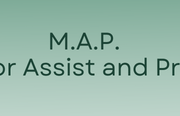Italy. 52.000 journalists received threats, Ossigeno reports. Who believes it?
Questo articolo è disponibile anche in:
Who will draw the consequences? The Observatory highlights that 3508 names of threatened journalists in Italy show just the tip of one iceberg that is 15 times bigger
Data collected and shared by Ossigeno per l’Informazione on threats, retaliations and abuses to journalists and bloggers in 2017 are greatly alarming. Nonetheless, one cannot say that 2017 was a particularly bad year for press freedom in Italy, because each year of the past decade has had similar figures.
In Italy in 2017, law enforcement officers protected 19 journalists with armed escorts composed of 2-4 police officers and armoured cars. This protection was given to journalists who had received death threats from the Mafia and extreme right wing and populists’ groups. Some of these journalists are under protection since 2007.
This year, the police disposed less effective surveillance measures to other 167 media operators. These data were communicated from the Italian Minister of the Interior, on December 6,th 2017.
In the same year, a further 423 journalists, bloggers and media operators suffered serious intimidation, threats and retaliations because their reporting activities, according to data made public by the monitoring organization Ossigeno per l’Informazione. In its usual way, this independent non-governmental observatory has verified each individual reported episode, has classified it by the typology of crime involved, has listed the name of each targeted person and disseminated news about it.
The same Observatory has specified that the 423 journalists whose intimidation it has documented are only a small part (6%) of those who really endured similar violence because of their work. A reliable estimate on how many actually have been threatened can be obtained by multiplying 423 by 15, which results in 6435 having been threatened. Therefore, in order to have more realistic figures about how many journalists have received threats, the 423 reported attacks should be multiplied for 13, the result of which will be 6435.
We would need a paper strip 7 meters long as high as a two story-building to print the table with such a long list. And this list would include just attacks from 2017.
If we liked to print out the list with all Italian victims of threats to freedom of information that Ossigeno has been reporting on since its foundation, namely from 2006 to 2017, we would rather need a paper 526 meters long, as high as one of the tallest skyscraper in the world.
Indeed, the list produced by Ossigeno (available here) included for period 2006-2011 3508 names of journalists, bloggers and media who had received attacks, intimidations, retaliations and legal threats such as vexatious legal claims made public by Ossigeno described in English with the acronym S.L.A.P.P. (Strategic Lawsuit against Public Participation) that indicates those legal actions aiming at stopping public participation.
Ossigeno has collected, verified and reported these attacks addressed to media operators one by one. The number is huge. However, as we have seen, they represent just the tip of the iceberg. Then, to calculate the invisible part, we would need to multiply 3508 by 15 and we come to the incredible number of 52620 victims of unjustified attacks to freedom of information. If we take one centimetres to write down each name, the paper will be 526 metres long.
What should we do then? Someone says that we are exaggerating, that we are basically saying that in Italy one journalist out of two has been threatened over the last eleven years out of a total of 105.00 accredited journalists and this is not realistic. Of course it is not. However, data do not agree. We are not talking only about accredited journalists as we include also bloggers, photo reporters, video reporters, publishers, columnists. So, the concerned group on which the percentage is calculated is bigger, at least three times bigger. Moreover, those who are attentive to this issue know that there are journalist bloggers and other media operators that have been receiving two, ten, hundreds of such attacks. They exist and we know some of them. Therefore, probably the real percentage on the entire category it is not of 50% but rather of 5%. A percentage that reflects the reality and it is far from being reassuring. We ask: what everybody could do in front of this situation? What can we do together, better and more than what we have done so far? What is this monitoring of such huge number of violations (of which 99% go unpunished) if there are not consequences? This Observatory enters its tenth anniversary from its foundation with these questions in mind.
ASP ONY (wt-if)








Leave a Reply
Want to join the discussion?Feel free to contribute!